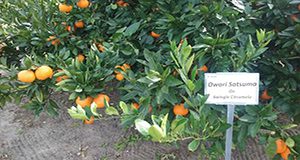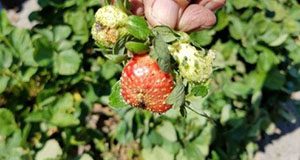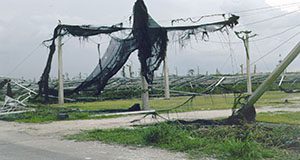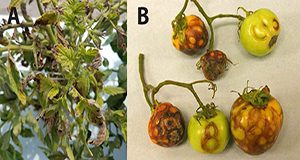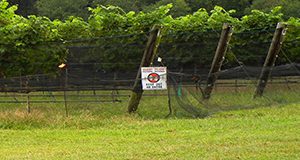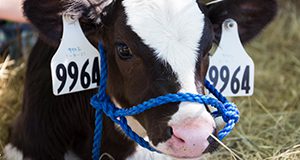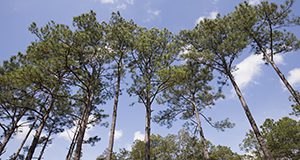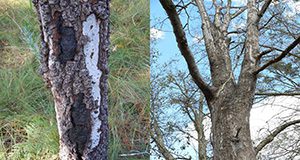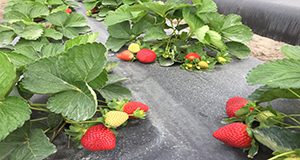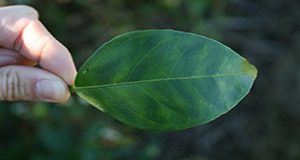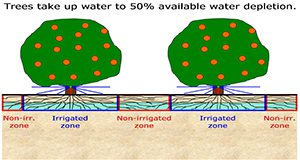This 16-page analysis written by Kevin R. Athearn, Peter C. Andersen, Bent V. Brodbeck, Lei Lani L. Davis, Clay Olson, Daniel K. Fenneman, Matthew Lollar, Derek Farnsworth, and Michael Perez and published by the UF/IFAS Food and Resource Economics Department provides research-based information and a description of satsuma mandarin markets, production costs, and potential returns for citrus growers who are considering establishing a satsuma grove in north Florida. Its purpose is to serve as a reference and model for growers to create their own enterprise budgets and make financial projections. An enterprise budget estimates revenues, costs, and net returns for a particular crop or farm enterprise to help growers assess the economic viability and risk of an enterprise, compare enterprises, and evaluate production or marketing changes. The budget and financial analysis may assist prospective and current satsuma growers, agricultural consultants, and lenders with planning and decision making.
http://edis.ifas.ufl.edu/fe1030
Category: Agriculture
Foliar or Bud Nematodes in Florida Strawberries
Foliar or bud nematodes are little-known nematodes that caused “crimp disease” in Florida strawberries in the early 1900s. Recently, these foliar nematodes have been observed again in the state, and seem to have come in with transplants from outside Florida. Foliar/bud nematodes can devastate a crop of strawberries. Plants become stunted with curled up leaves, and produce few or no flowers or fruits. This 7-page fact sheet written by J. Desaeger and J. Noling and published by the UF/IFAS Department of Entomology and Nematology provides much-needed information on these little-understood pests, summarizing the different types of foliar nematodes, their biology, life cycle, damage symptoms, survival strategies, dissemination, and management options.
edis.ifas.ufl.edu/in1184
UF/IFAS Standardized Nutrient Recommendations for Vegetable Crop Production in Florida
Soil testing is a scientific tool for effective nutrient management that provides an estimate or an index of the available nutrient-supplying capacity of the soil. This 9-page publication presents the fertilization recommendations for vegetable crops based on soil tests performed by the IFAS Extension Soil Testing Laboratory (ESTL). Written by Rao Mylavarapu, George Hochmuth, and Guodong Liu and published by the UF/IFAS Department of Soil and Water Sciences, December 2017.
http://edis.ifas.ufl.edu/cv002
Food Safety on the Farm: Good Agricultural Practices and Good Handling Practices-Worker Health and Hygiene
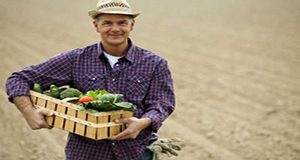
The ‘Food Safety on the Farm’ series is a collection that reviews the generally recognized principles of GAPs (good agricultural practices) as they relate to produce, primarily at the farm level and with particular focus on fresh Florida crops and practices. This 4-page publication focuses on GAPs and GHPs (good handling practices) relating specifically to worker health and hygiene. Written by Jessica A. Lepper, Keith R. Schneider, Renee M. Goodrich-Schneider, and Aswathy Sreedharan and published by the UF/IFAS Food Science and Human Nutrition Department, December 2017.
http://edis.ifas.ufl.edu/fs158
Hurricane Preparation List for the Container Nursery
Busy professionals don’t often have time to consider the impact a hurricane can have on their nursery until one is on the way. This 2-page fact sheet provides a list of items and tasks to complete prior to a hurricane’s arrival to minimize damage to the nursery. Written by Tom Yeager and published by the UF/IFAS Environmental Horticulture Department, December 2017.
http://edis.ifas.ufl.edu/ep547
Food Safety on the Farm: Good Agricultural Practices and Good Handling Practices-Field Sanitation
The ‘Food Safety on the Farm’ series is a collection that reviews the generally recognized principles of GAPs (good agricultural practices) as they relate to produce, primarily at the farm level and with particular focus on fresh Florida crops and practices. This 4-page publication focuses on GAPs and GHPs (good handling practices) relating specifically to field sanitation. Written by Jessica A. Lepper, Aswathy Sreedharan, Renee M. Goodrich-Schneider, and Keith R. Schneider and published by the UF/IFAS Department of Food Science and Human Nutrition, December 2017.
http://edis.ifas.ufl.edu/fs160
Tospovirus-Resistant Tomato Varieties for Southern Florida
Tospoviruses are plant-infecting viruses, with three tosposvirus species being particularly relevant to Florida tomato production: Tomato spotted wilt virus, Tomato chlorotic spot virus, and Groundnut ringspot virus. This 5-page document describes the performance of several tospovirus-resistant tomato hybrids based on grower trials in the Homestead, FL production area. Written by Rebecca L. Wente, Samuel F. Hutton, Scott Adkins, William Turechek, and Joseph Funderburk and published by the UF/IFAS Horticultural Sciences Department, December 2017.
http://edis.ifas.ufl.edu/hs1311
Caladium Cultivars 'Cosmic Delight', 'Fiesta', and 'Hearts Desire'
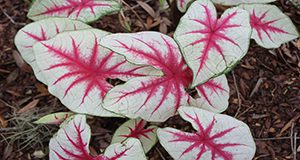 Caladiums are commonly grown in containers, hanging baskets, or planted directly in the landscape as accent and border plants. New caladium cultivar introductions are important to the Florida caladium industry, the greenhouse/nursery industries, and commercial landscape maintenance companies. The UF/IFAS Gulf Coast Research and Education Center released three new caladium cultivars, ‘Cosmic Delight’, ‘Fiesta’, and ‘Hearts Desire’, in 2015. This 7-page document describes the characteristics, production potential, and performance of these cultivars. Written by Zhanao Deng and published by the UF/IFAS Environmental Horticulture Department, December 2017.
Caladiums are commonly grown in containers, hanging baskets, or planted directly in the landscape as accent and border plants. New caladium cultivar introductions are important to the Florida caladium industry, the greenhouse/nursery industries, and commercial landscape maintenance companies. The UF/IFAS Gulf Coast Research and Education Center released three new caladium cultivars, ‘Cosmic Delight’, ‘Fiesta’, and ‘Hearts Desire’, in 2015. This 7-page document describes the characteristics, production potential, and performance of these cultivars. Written by Zhanao Deng and published by the UF/IFAS Environmental Horticulture Department, December 2017.
http://edis.ifas.ufl.edu/ep545
Worker Protection Standard: Additional Requirements for Agricultural Employers of Workers
The Worker Protection Standard (WPS) Act for Agricultural Pesticides was established by the US Environmental Protection Agency in 1992 and has undergone several revisions since. Recent revised provisions became effective in January 2017. This document will address the additional requirements for agricultural employers of workers under the revised WPS. Written by Frederick M. Fishel and published by the UF/IFAS Agronomy Department, December 2017.
http://edis.ifas.ufl.edu/pi273
Nutrition at Early Stages of Life Determines the Future Growth and Reproductive Performance of Dairy Calves
For a calf, nutrition during the first few months of its life may permanently change the way organs develop and then have long-term consequences. The concept that metabolic imprinting may permanently affect animal development has substantial economic implications for agriculture. This 6-page fact sheet summarizes some of the research conducted in calf nutrition and its impact on the growth and reproductive performance of dairy calves. Written by Philipe Moriel and Luiz Ferraretto, and published by the UF/IFAS Department of Animal Sciences, December 2017.
http://edis.ifas.ufl.edu/an336
Peach Consumption: A Profile of Purchasers and Non-Purchasers

Peaches are among the most commonly produced fruits in the United States; understanding consumer awareness, perceptions, and preferences regarding Florida peaches is important to the future of the industry. This 5-page document addresses consumers’ perceptions of Florida peaches, purchasing motivations and barriers, preferred packaging options and opportunities, purchasing locations, and knowledge of peach health benefits. Written by Joy Rumble, Kara Harders, and Kathryn Stofer and published by the UF/IFAS Department of Agricultural Education and Communication, December 2017.
http://edis.ifas.ufl.edu/wc288
Micronutrients Considerations for Warm-Season Forage Grass Systems in Florida
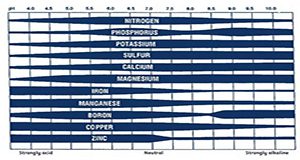 Warm-season grasses are vital to livestock production systems and dominate ground cover in tropical and subtropical areas. The objective of this 7-page publication is to provide basic information about the role of micronutrients in warm-season grass production systems in Florida. Written by Jane C. Griffin, Joao Vendramini, Diane Rowland, and Maria L. Silveira and published by the UF/IFAS Agronomy Department, November 2017.
Warm-season grasses are vital to livestock production systems and dominate ground cover in tropical and subtropical areas. The objective of this 7-page publication is to provide basic information about the role of micronutrients in warm-season grass production systems in Florida. Written by Jane C. Griffin, Joao Vendramini, Diane Rowland, and Maria L. Silveira and published by the UF/IFAS Agronomy Department, November 2017.
http://edis.ifas.ufl.edu/ag419
Florida Trees Store Carbon in Forests and Wood Products
Trees store carbon as they grow and produce wood. Carbon, and carbon storage in particular, have become important topics as policymakers, scientists, and industry leaders consider how to address the increasing amount of CO2 in our atmosphere. Because it changes the composition of the atmosphere, CO2 is a leading contributor to climate change. This 4-page fact sheet written by Adam Maggard, Leslie Boby, and Martha Monroe and published by the UF/IFAS School of Forest Resources and Conservation explains how storing carbon in living trees and in long-lasting wood products such as lumber and furniture can reduce atmospheric CO2. Florida’s forest and wood-product industries are worth billions of dollars. Clean water, wildlife, and other benefits add to the value and importance of these forests.
http://edis.ifas.ufl.edu/fr409
Florida Peaches: A Perfect Snack
The growing conditions in Florida have given Florida-grown peaches unique characteristics that make them an ideal springtime snack. This 3-page document discusses the characteristics, health benefits, purchase, and storage of Florida peaches. Written by Joy Rumble, Kara Harders, and Kathryn Stofer and published by the UF/IFAS Department of Agricultural Education and Communication, November 2017.
http://edis.ifas.ufl.edu/wc287
Biscogniauxia (Hypoxylon) Canker or Dieback in Trees
Biscogniauxia canker or dieback is a common contributor to poor health and decay in a wide range of tree species growing in many different habitats, such as forests, parks, green spaces, and urban areas, in Florida. This disease is caused by several species of fungi in the genus Biscogniauxia (formerly Hypoxylon). These pathogens do not typically harm healthy and vigorous trees, but once they infect trees under stress from drought, root disease, soil compaction, construction damage or other causes, they can quickly colonize the tree. Once a tree is infected and fruiting structures of the fungus are evident, the tree is not likely to survive, especially if the infection is in the trunk. This 3-page fact sheet written by Claudia Paez and Jason Smith and published by the UF/IFAS School of Forest Resources and Conservation explains the pathogen’s biology and lists signs and symptoms as well as control measures and ways to keep trees healthy to resist infection.
http://edis.ifas.ufl.edu/fr407
'Florida Beauty' Strawberry
‘Florida Beauty’ is a new strawberry cultivar released by the University of Florida and commercialized in 2017. This 4-page document describes the characteristics, performance, growth, and management of this cultivar. Written by Vance M. Whitaker, Natalia A. Peres, and Shinsuke Agehara and published by the UF/IFAS Horticultural Sciences Department, November 2017.
http://edis.ifas.ufl.edu/hs1307
2016 Evaluation of Foliar Fungicides for Disease Control in Peanut in Jay, FL
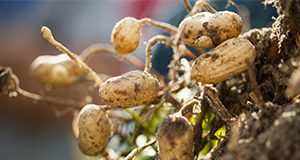 This report includes a summary of the 2016 foliar fungicide programs for control of early and late leaf spot and white mold (southern stem rot) in peanut at Jay, Florida. It shows the effectiveness of 13 fungicide programs for disease control. This 6-page fact sheet discusses fungicide treatments, treatment rates, application timing, 2016 growing conditions, experimental design, and results. Written by Michael Mulvaney, Robert Kemerait, John Atkins, and Nicholas Dufault, and published by the UF Agronomy Department, April 2017.
This report includes a summary of the 2016 foliar fungicide programs for control of early and late leaf spot and white mold (southern stem rot) in peanut at Jay, Florida. It shows the effectiveness of 13 fungicide programs for disease control. This 6-page fact sheet discusses fungicide treatments, treatment rates, application timing, 2016 growing conditions, experimental design, and results. Written by Michael Mulvaney, Robert Kemerait, John Atkins, and Nicholas Dufault, and published by the UF Agronomy Department, April 2017.
http://edis.ifas.ufl.edu/ag415
Citrus Tree Care for the Home Gardener in the HLB Era
Since the early 2000s, growing citrus has become much more challenging due to plant disease pressure. HLB is the most devastating disease affecting Florida citrus, and threatens the survival of the citrus industry. This 4-page document describes citrus growth and care while managing the risk of an HLB infection. Written by Jamie D. Burrow, Tripti Vashisth, Megan Dewdney, and Brooke Moffis and published by the UF/IFAS Plant Pathology Department, November 2017.
http://edis.ifas.ufl.edu/pp336
Bloomify Red and Bloomify Rose, Two Infertile Lantana camara Cultivars for Production and Use in Florida
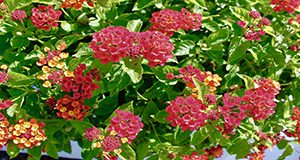 Lantana camara is a popular nursery and landscape plant in the United States; however, it is listed as a Category 1 invasive species to Florida due to its ability to hybridize with Florida’s native plant species Lantana depressa. In 2004, the UF/IFAS Gulf Coast Research and Education Center initiated a research program to develop two highly infertile L. camara cultivars, ‘Bloomify Red’ and ‘Bloomify Rose’. This five-page document discusses the production and characteristics of these cultivars. Written by Zhanao Deng and Sandra B. Wilson and published by the UF/IFAS Environmental Horticulture Department, October 2017. http://edis.ifas.ufl.edu/ep544
Lantana camara is a popular nursery and landscape plant in the United States; however, it is listed as a Category 1 invasive species to Florida due to its ability to hybridize with Florida’s native plant species Lantana depressa. In 2004, the UF/IFAS Gulf Coast Research and Education Center initiated a research program to develop two highly infertile L. camara cultivars, ‘Bloomify Red’ and ‘Bloomify Rose’. This five-page document discusses the production and characteristics of these cultivars. Written by Zhanao Deng and Sandra B. Wilson and published by the UF/IFAS Environmental Horticulture Department, October 2017. http://edis.ifas.ufl.edu/ep544
Irrigation Management of HLB-Affected Trees
Water is a limiting factor in Florida citrus production due to non-uniform rainfall distribution and the low water-holding capacity of our sandy soils. Because periods of low rainfall coincide with critical stages of citrus production, additional irrigation is necessary to reduce the negative effects of water stress. This 6-page document covers recent findings on water use of trees affected by citrus greening and the impact this would have on irrigation management considerations. Written by Davie Kadyampakeni, Kelly Morgan, Mongi Zekri, Rhuanito Ferrarezi, Arnold Schumann, and Thomas A. Obreza and published by the UF/IFAS Department of Soil and Water Sciences, October 2017.
http://edis.ifas.ufl.edu/ss659
